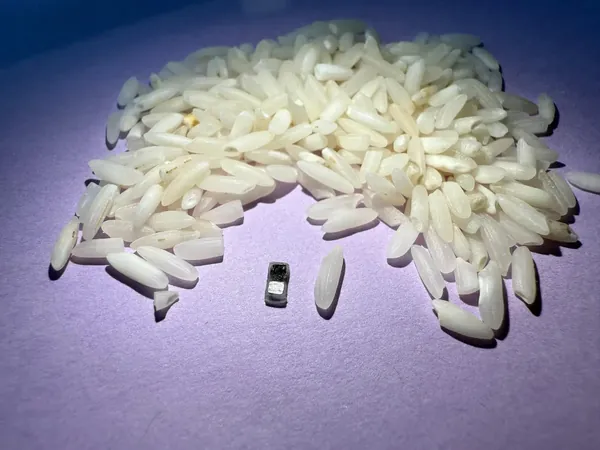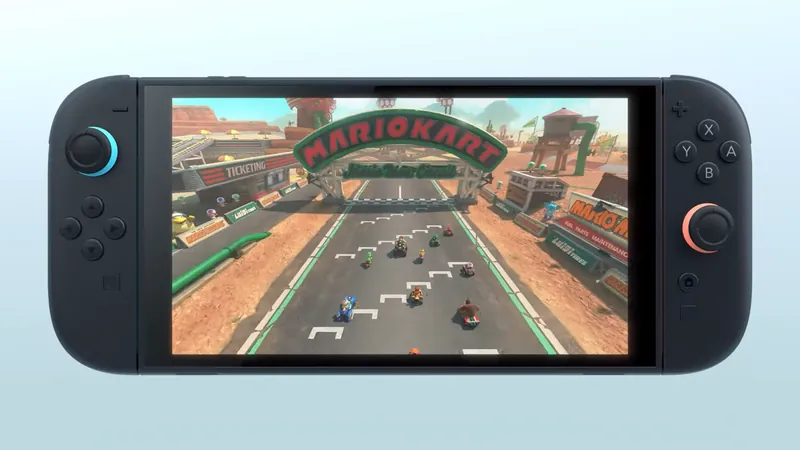
Revolutionary Miniature Pacemaker Smaller Than a Grain of Rice Set to Transform Cardiac Care
2025-04-03
Author: Jia
Introduction
In a groundbreaking announcement, scientists have unveiled a remarkable innovation: the smallest pacemaker ever created, measuring less than a grain of rice. This tiny device, which can be injected into the body and controlled via light, represents a potential game-changer for cardiac care, particularly for patients recovering from heart surgery.
Clinical Implications
This phenomenal advancement, revealed in a study published in the prestigious journal *Nature*, aims to provide solutions for the one percent of newborns diagnosed with congenital heart defects who require temporary pacemakers shortly after surgical procedures. Furthermore, it promises benefits for adult patients as they recuperate post-surgery, potentially eliminating the need for invasive temporary pacemaker implantation.
Historical Context
Historically, temporary pacemakers have involved surgically attaching electrodes to the heart, connected to a larger powered device externally. This method can sometimes lead to complications when the device is removed, as evidenced by the tragic case of Neil Armstrong, the legendary astronaut, who suffered internal bleeding following the removal of his temporary pacemaker in 2012.
Innovative Features
What sets this new pacemaker apart is its wireless capability, measuring only one millimeter thick and 3.5 millimeters long — small enough to fit into the tip of a syringe. After its purpose is served, the device dissolves within the body, alleviating the need for additional surgical procedures.
Operational Mechanism
The pacemaker activates in response to a soft patch worn on the patient's chest. This patch monitors the heart's rhythm and emits light signals to instruct the pacemaker on when to stimulate heartbeats. Powered by a galvanic cell that converts bodily fluids into electrical energy for stimulation, this innovative approach has already shown promising results, effectively functioning in tests conducted on various animals, including mice, rats, pigs, dogs, and human heart tissue in laboratory settings.
Future Prospects
John Rogers, a senior author of the study from Northwestern University, anticipates human trials could commence within two to three years. His team has even launched a startup to expedite this revolutionary technology.
Expert Opinions
Experts in the field see this development as a significant leap forward. Bozhi Tian from the University of Chicago, who specializes in light-activated pacemakers, described the new device as a "transformative breakthrough in medical technology." He emphasizes that it could usher in a paradigm shift not just for cardiology but for broader medical applications including nerve regeneration, wound healing, and integrated smart implants.
Conclusion
As the World Health Organization identifies heart disease as the leading cause of death globally, this novel technology holds immense promise for improving patient outcomes and reshaping the future of medical interventions across various specialties. Stay tuned, as this innovative pacemaker may very well mark the dawn of a new era in cardiac care.




 Brasil (PT)
Brasil (PT)
 Canada (EN)
Canada (EN)
 Chile (ES)
Chile (ES)
 Česko (CS)
Česko (CS)
 대한민국 (KO)
대한민국 (KO)
 España (ES)
España (ES)
 France (FR)
France (FR)
 Hong Kong (EN)
Hong Kong (EN)
 Italia (IT)
Italia (IT)
 日本 (JA)
日本 (JA)
 Magyarország (HU)
Magyarország (HU)
 Norge (NO)
Norge (NO)
 Polska (PL)
Polska (PL)
 Schweiz (DE)
Schweiz (DE)
 Singapore (EN)
Singapore (EN)
 Sverige (SV)
Sverige (SV)
 Suomi (FI)
Suomi (FI)
 Türkiye (TR)
Türkiye (TR)
 الإمارات العربية المتحدة (AR)
الإمارات العربية المتحدة (AR)